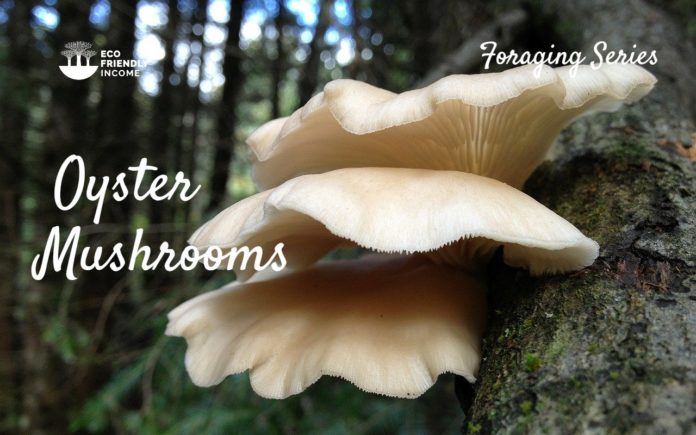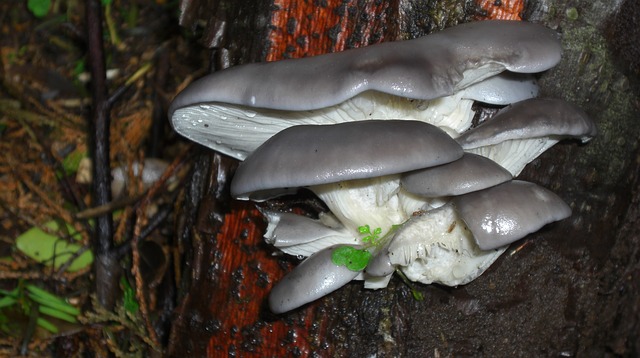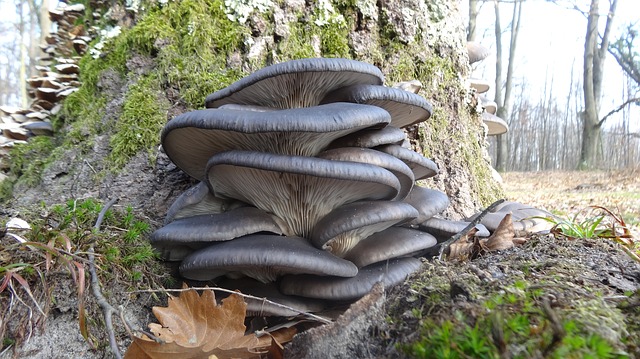Learning how to identify oyster mushrooms is pretty easy, and once you do, you’ll have a new wild treat to bring home to your dining table.
They are a mushroom with one of the longest picking periods out there. They’re available nearly all year long.
I’ve been a tree planter for many years now, I’ve had the opportunity to see oyster mushrooms numerous times. Most commonly though, I have seen these grow after my planting season when the cold weather creeps in.
They have a mild taste but are quite nutritious, which makes them a worthy mushroom to bring back home.
I think any mushroom lover should go hunt for them, so I decided to share my knowledge and teach you how to identify oyster mushrooms.
In this guide, you can expect to learn the following:
- The Oyster Mushroom Picking Season
- How to Identify Oyster Mushrooms
- Where to Find Oyster Mushrooms
- What They Taste Like
- How to Store, Clean and Cook Them
Let’s get started!
The Oyster Mushroom Picking Season
Oyster Mushrooms (Pleurotus ostreatus) are the nearest thing to a year-round mushroom. You can find and eat them any time of the year, but from late August to mid-June is the best picking season.

While they do spawn during summer, the tastiest oyster mushrooms you’ll pick are the ones either early spring or fall.
Mid-summer harvest tends to be almost clear white and break easily in your hand. But oyster mushrooms picked during colder months will have gray caps and a much firmer texture.
Generally, most people agree that the firmer oysters taste better and are more nutritious.
Additionally, factors like rainfall and weather affect when oyster mushrooms start to fruit. A good week of rain is always beneficial for any mushroom to spawn.
Even a warm spell mid-winter can trigger oyster mushrooms to fruit.
How to Identify Oyster Mushrooms
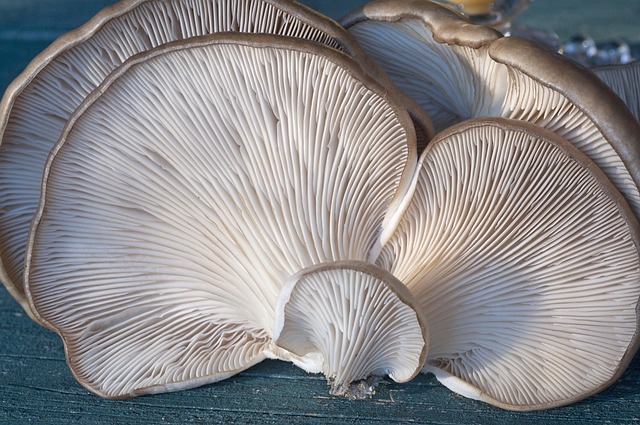
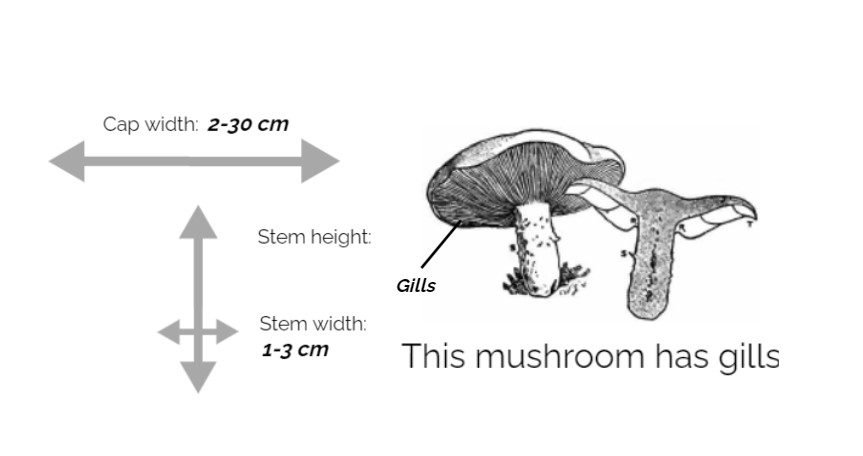
Oyster mushrooms are a species of wood-inhabiting mushrooms. Their spore print is white, and they have white gills under their caps.
The majority of oyster mushrooms you’ll find won’t have much of a stem, rather they’ll be stuck directly to a tree.
The color of their caps ranges from white in the warmer months, to brown and gray in the colder months.
Oyster mushroom cap edges are curled inward. Additionally, if you look closely, you’ll see the gills at the edges are more numerous than the ones nearer to the base.
They rarely spawn alone, most commonly seen as clumps of mushrooms growing on top of another.
Another possible way to identify oyster mushrooms is by their scent. Generally, people tend to say they have a smell similar to anise. Others say they get a fishy or sea-foody smell from them.
Oyster Mushroom Lookalikes
There are some oyster mushroom lookalikes, here’s a few of the most likely you are to encounter. Let’s look at how you can tell them apart:
Bear Lentinellus (Lentinellus Ursinus)
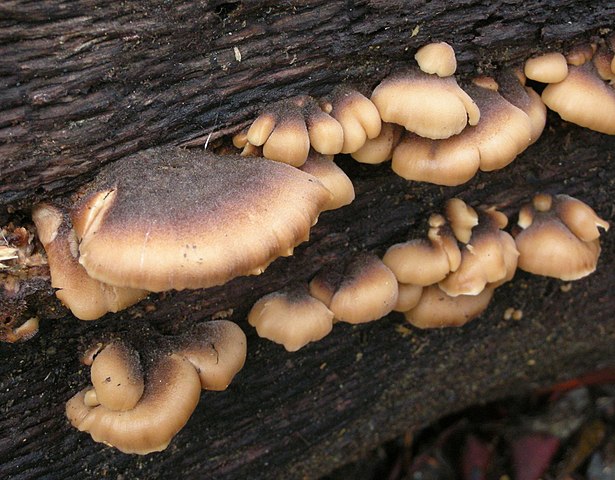
Photo by Holger Krisp / CC-BY 3.0 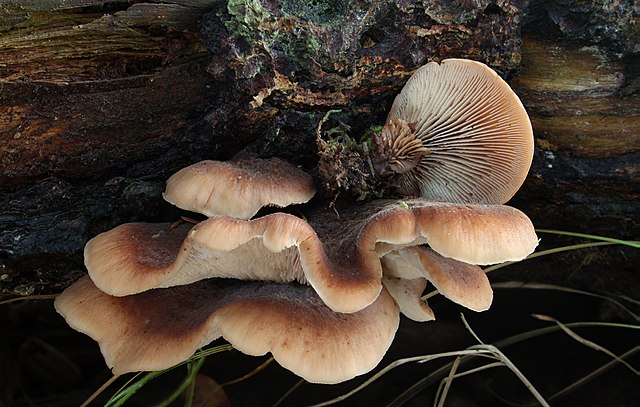
Photo by Ron Pastorino / CC-BY SA 3.0
How to tell Lentinellus ursinus apart from Oyster Mushrooms:
- Color: Lentinellus have similar shape but their color is different. They are reddish-brown but become paler toward the edges. Oysters should be the same color on the whole cap.
- The gills: If you take a close look at the gills from a patch of lentinellus, you’ll notice that some of the gills became serrated, like saw teeth. Oyster mushroom gills won’t be broken up or saw-toothed.
- The taste: If you mistakenly picked lentinellus and cooked them, you won’t be sick because they’re not toxic. But they taste bitter and are quite unpleasant. Oyster mushrooms on the other hand have a mild and pleasant taste.
Peeling Oysterling (Crepidotus mollis)
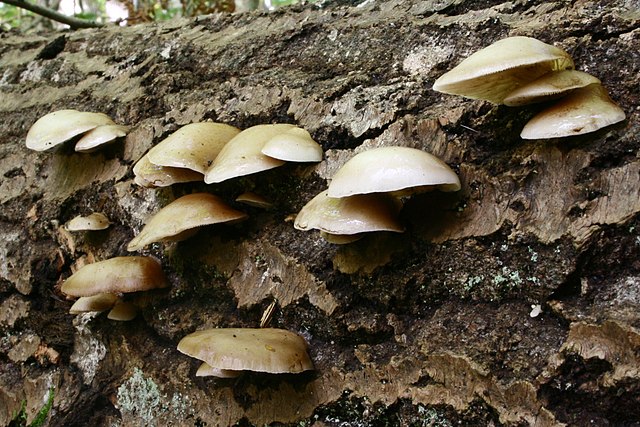
Photo by Strobilomyces / CC BY-SA 3.0 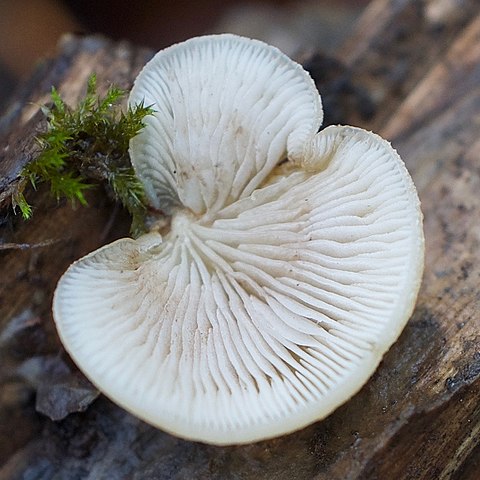
Photo by Adam Bryant / CC BY-SA 4.0
Here’s how you can tell oyster mushrooms apart from peeling oysterlings:
- The cap cuticle (skin): A distinguishing characteristic of the peeling oysterling is the skin on its caps. It easily comes off and can be stretched to nearly twice its normal length. Oyster mushroom’s skin doesn’t stretch like this or come off as easily.
- Its growth tendency: Oyster mushrooms normally grow in large clumbs, while peeling oysterlings tend to grow in spread out, smaller clumps.
- The size: Peeling oysterlings don’t usually grow much wider than 5cm, while oyster mushrooms grow much larger.
- Spore print: Oyster mushrooms will always have a white spore print while a peeling oysterling’s spore print is brown.
Angel Wings (Pleurocybella porrigens)
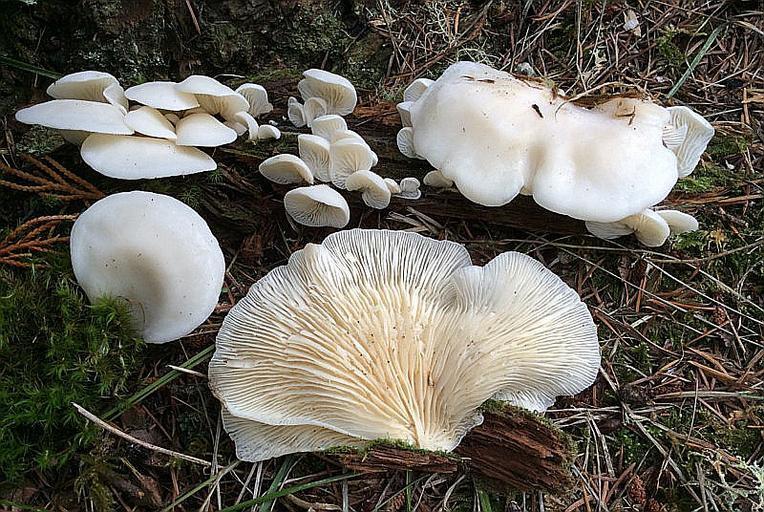
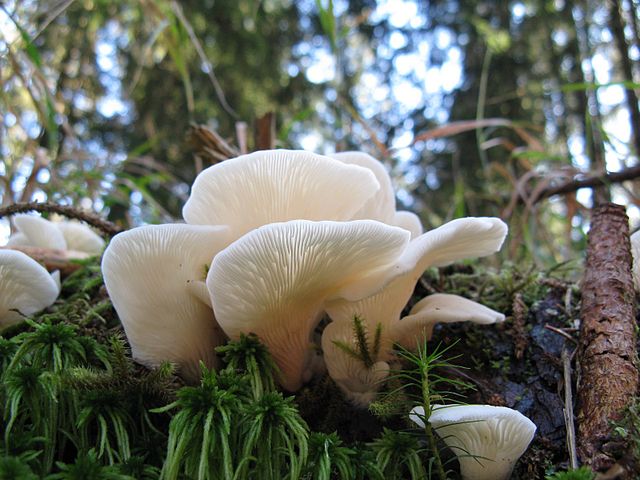
Photo by Jan Eckstein / CC BY-SA 3.0
Potentially Poisonous
This mushroom has been linked to an outbreak of serious illness and death in Japan back in 2004. Quite strange since it had been widely eaten before that point. In consideration of this, we recommend to steer clear of angel wings.
Here are distinguishing attributes to tell angel wings apart from oyster mushrooms:
- Growth habit: Angel wings grow on conifer wood, for example, pine or spruce. True oyster mushrooms only grow on deciduous trees like beech or poplar.
- Color: Angel wings are pure ivory color, while oyster mushrooms are usually gray. To avoid mistaking the two, avoid picking oyster mushrooms during summer when their color is similar to angel wings.
- Spore print: Oyster mushroom spores are cylindrical, while angel wings’ spores are broadly ellipsoid.
- Thickness: Angel wings are thinner and flimsier than oyster mushrooms, which are sturdier and have a rubbery texture.
Where Oyster Mushrooms are Found
Oyster mushrooms are quite common. Anywhere you can find plenty of tree stumps and fallen trees in a generally wet area is a good place to look.
Since they are saprophytic, you will only find oyster mushrooms growing on dead or dying trees. They are part of the decomposers of the world.
There is one type of tree it is often associated with: Beech trees. A forest where beech trees grow is a breeding ground for oyster mushrooms.
An important point to remember: Oyster mushrooms only grow on deciduous trees, any similar-looking mushrooms found growing on conifers are not oyster mushrooms.
What Oyster Mushrooms Taste Like
When freshly picked and cooked, oyster mushroom flavor is mild but pleasant. It can pull flavor from ingredients you add while cooking.
The best part about oyster mushrooms is the texture. They have a soft yet chewy texture that makes them a pleasant addition to your favorite dishes.
How to Store, Clean & Cook Oyster Mushrooms
How to Store Them
Storing oyster mushrooms correctly is important to keep them in good condition. You never want to store them in a sealed plastic bag or container.
The best option is a brown paper bag or a container with a clean towel over it. Doing this will ensure you control the moisture and prevent any molds from growing.
Place in a dark, cool place until ready to cook.
Oyster mushrooms also freeze well, since they naturally endure frost in their environment. It’s recommended to blanch or sauté them first before freezing, this will preserve their delightful texture.
How to Clean Them
Before you can eat them, you need to clean the mushrooms. As a general rule of thumb, not just with oyster mushrooms but any other mushroom, you don’t want to run water on them.
If you take your mushrooms to the sink and clean them in running water, they will absorb water and puff up. It will make them less savory when cooked.
What you want to do is take a clean hand cloth and gently rub off any dirt from the mushroom. A clean little brush is also handy to get into the cracks. That’s really all you need to do, they will cook much better if they’re not wet.
How to Cook Oyster Mushrooms
Where I work, we live in camps in the northern boreal forests. This far away from civilization means we have to cook all our food ourselves. But thankfully, there are some wonderful cooks that work with us, and they’ve taught me the secrets to cooking Oyster mushrooms to perfection.
Here’s what you want to do:
- Step 1: Heat up some oil in a pan until it’s quite hot, but not so hot that it smokes (canola or olive oil)
- Step 2: Place the sliced mushrooms in the pan and let them fry until they get golden, flip on other side.
- Step 3: When this is done, add in some chopped shallots and toss.
- Step 4: Finally, deglaze the pan with white wine and lower the heat, simmer for a bit.
- Step 5: That’s it! By now it should smell delicious, final touch is to add a bit of butter with salt + pepper. Enjoy!
Conclusion
That’s it! That should have covered everything you need to know to identify oyster mushrooms yourself! I hope you get to bring some back home soon and savor their delightful texture.
If you have additional questions or comments to add, write them down below and let’s talk.
Happy hunting!
Interested in medicinal plants? Learn about medicinal plants you can forage in our guide.

